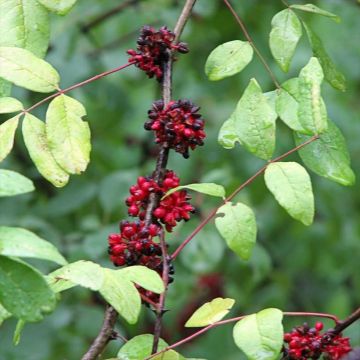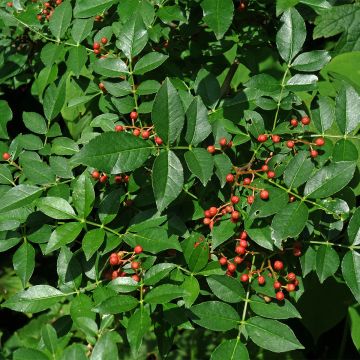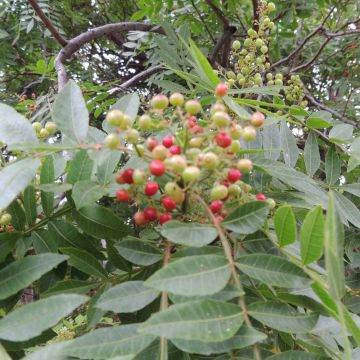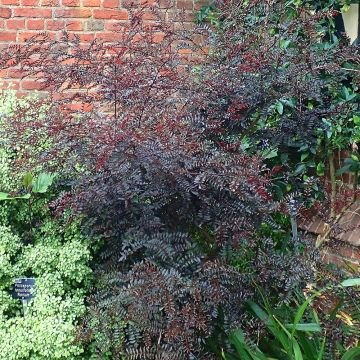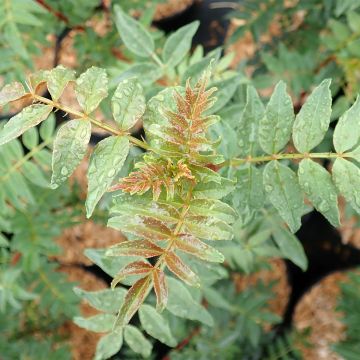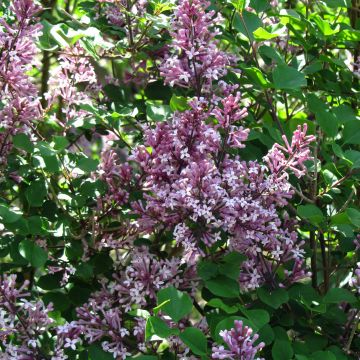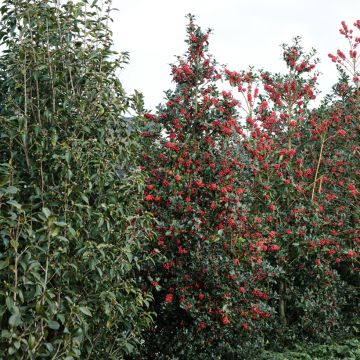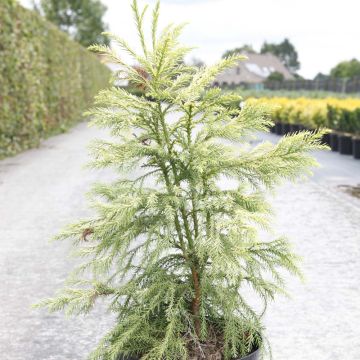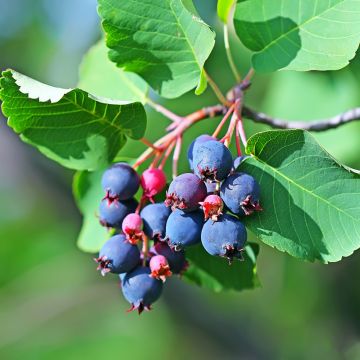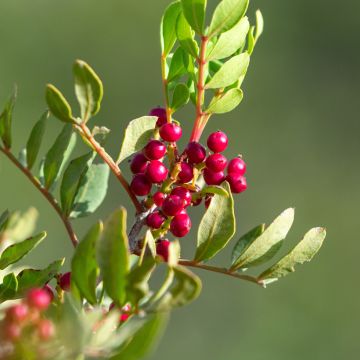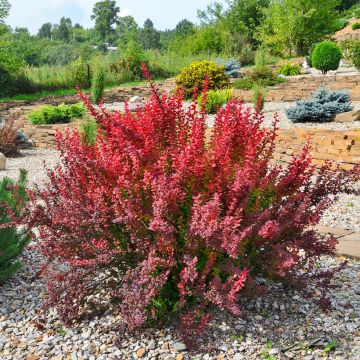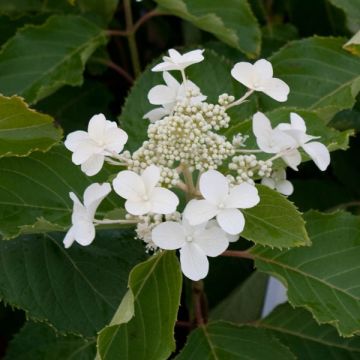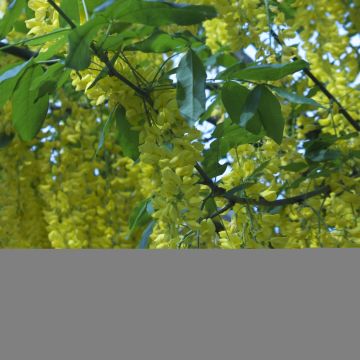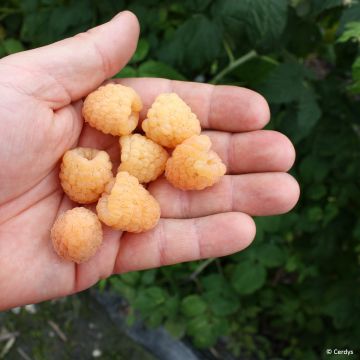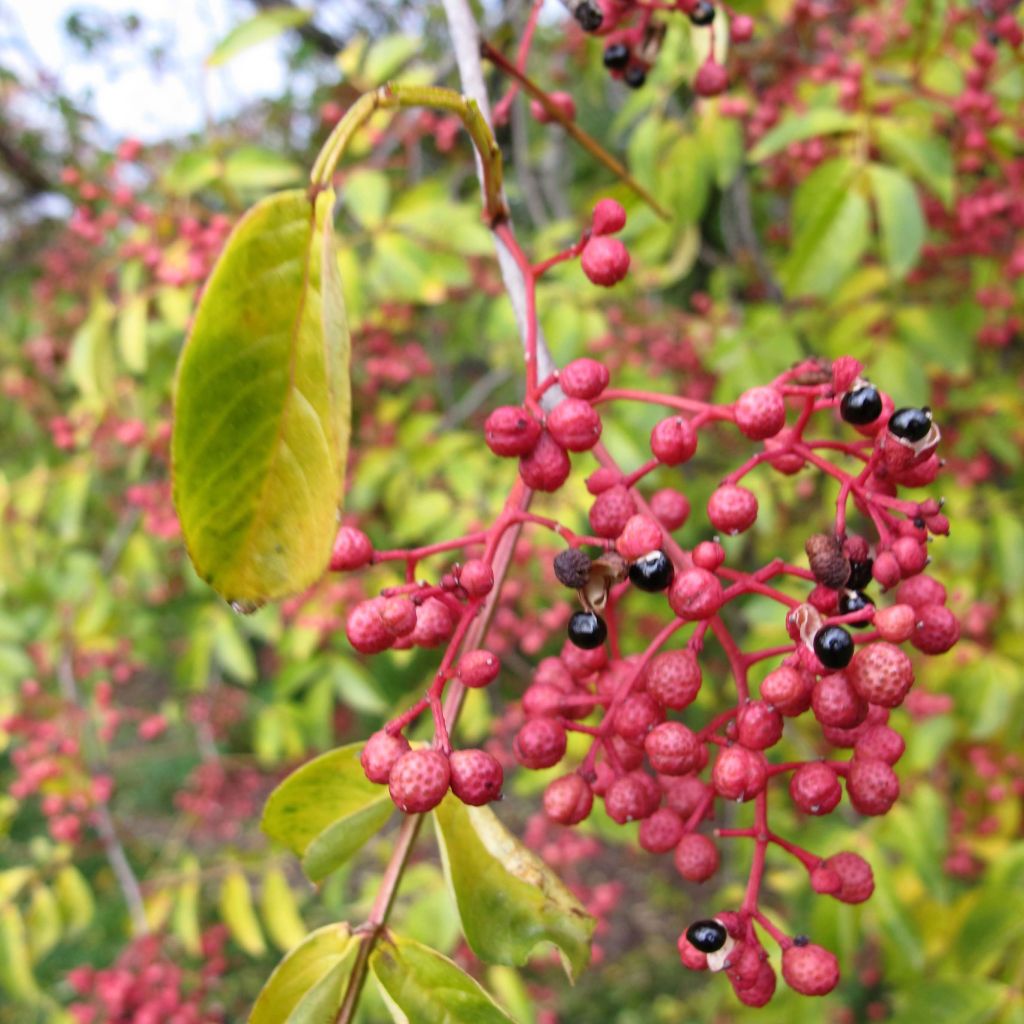

Zanthoxylum simulans
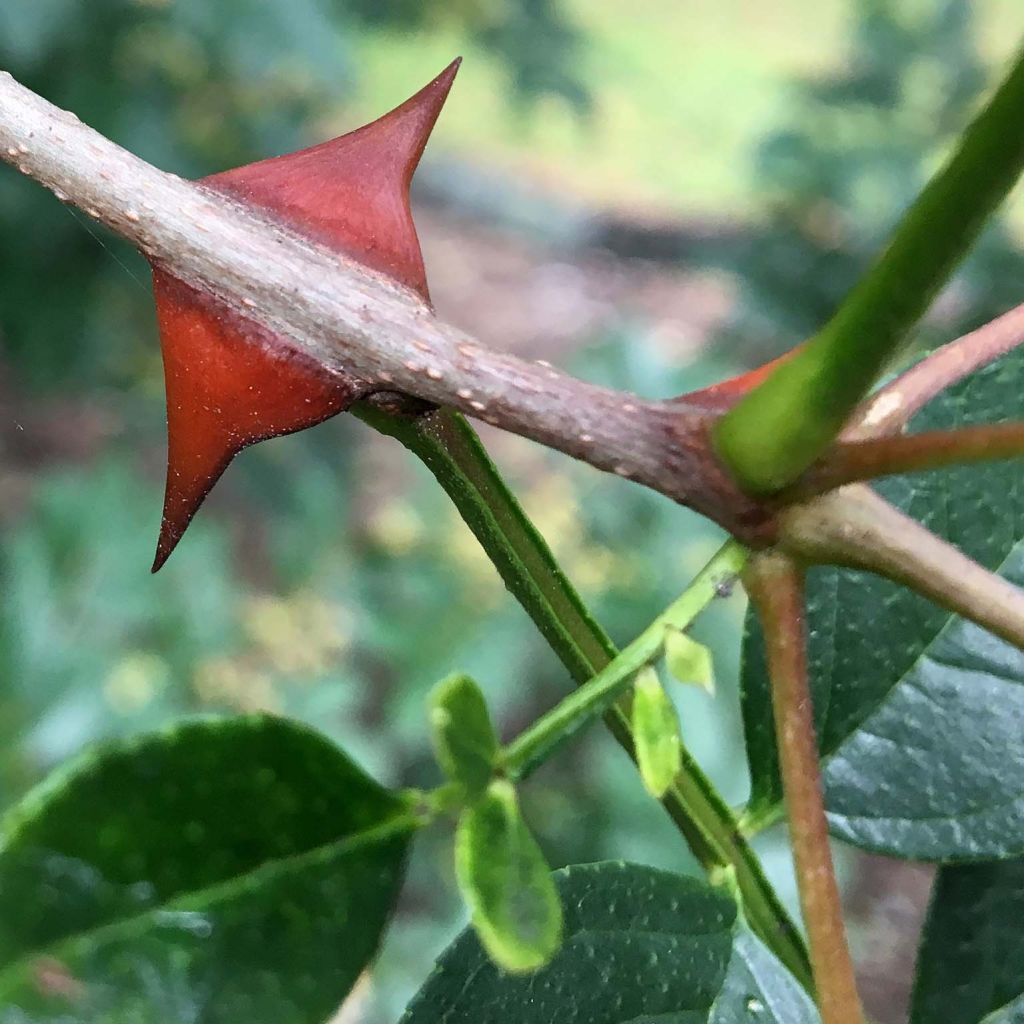

Zanthoxylum simulans
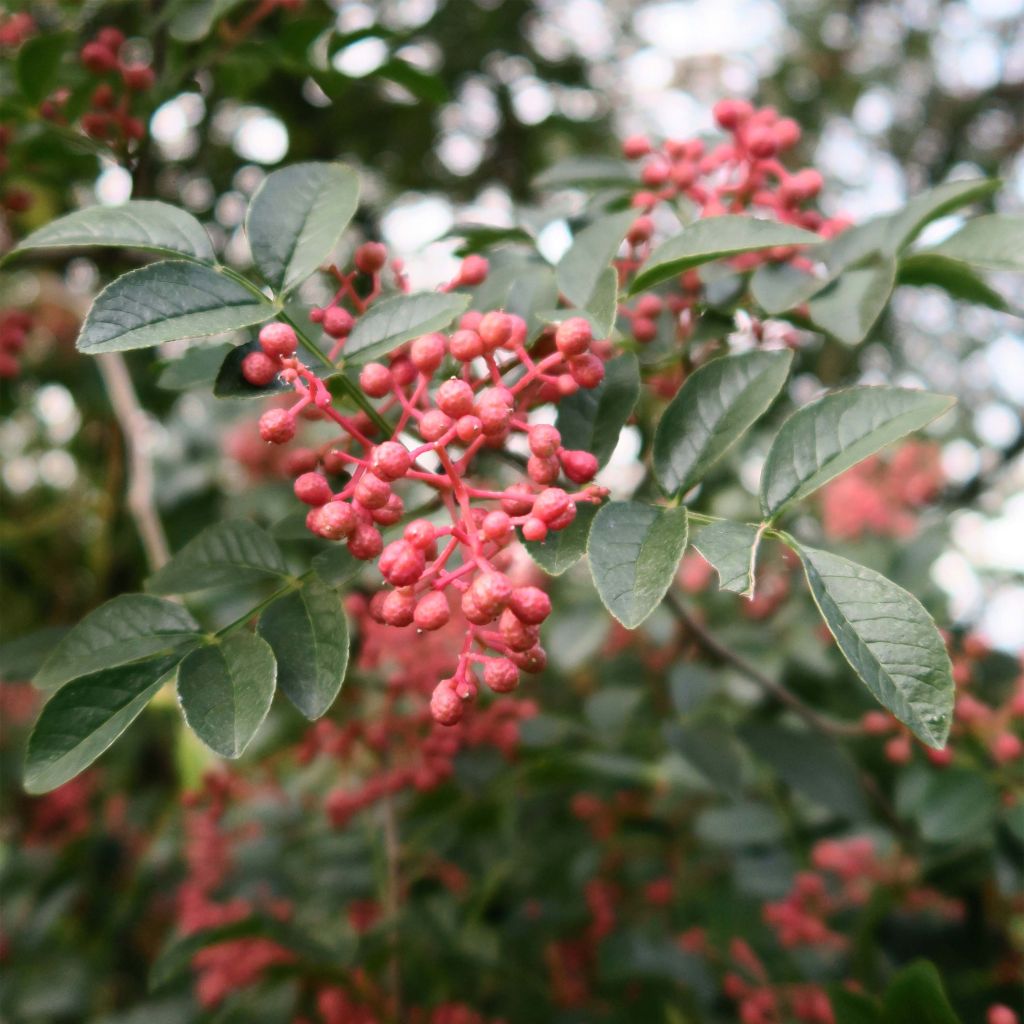

Zanthoxylum simulans
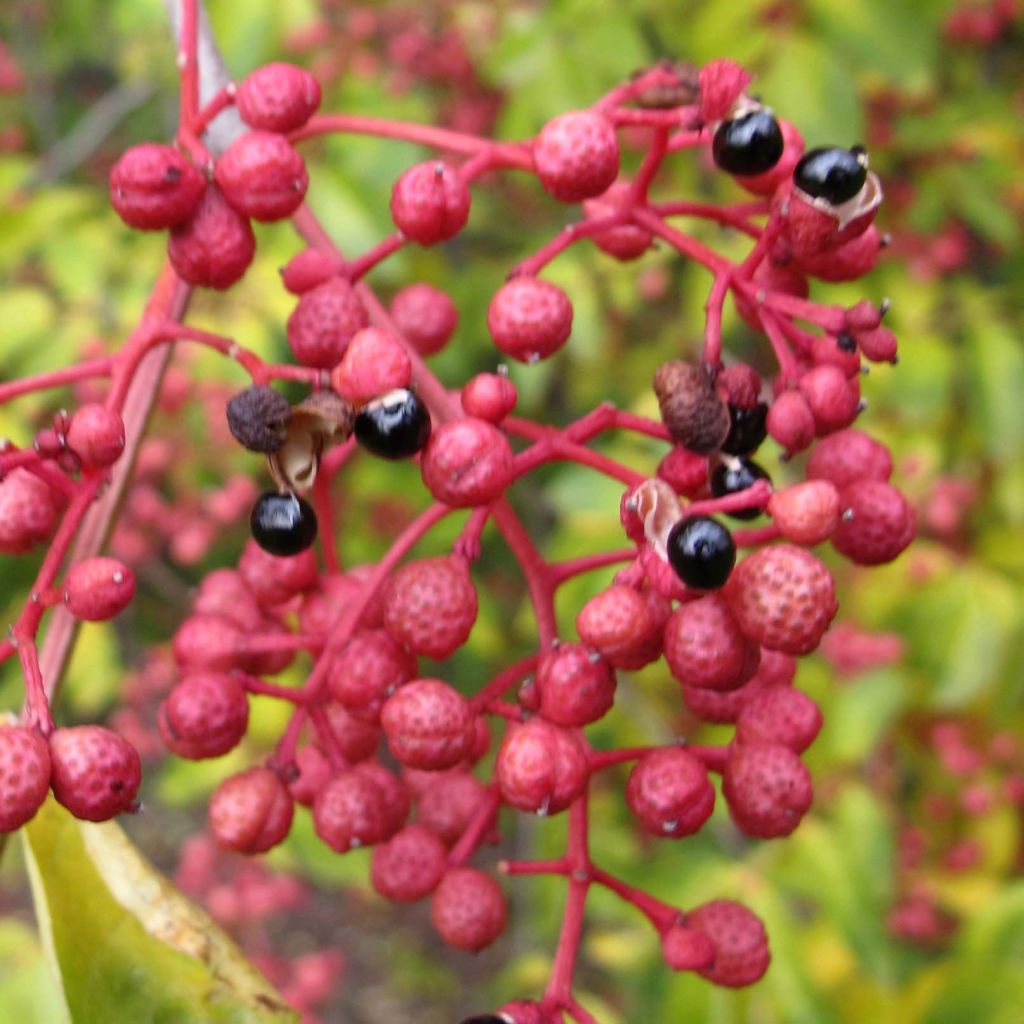

Zanthoxylum simulans
Zanthoxylum simulans
Zanthoxylum simulans
Sichuan pepper, Flatspine prickly-ash, Chinese prickly-ash
Why not try an alternative variety in stock?
View all →This plant carries a 24 months recovery warranty
More information
We guarantee the quality of our plants for a full growing cycle, and will replace at our expense any plant that fails to recover under normal climatic and planting conditions.
From €5.90 for pickup delivery and €6.90 for home delivery
Express home delivery from €8.90.
Oversize package: home delivery by special carrier from €6.90 per order..
Express home delivery from €8.90.

Does this plant fit my garden?
Set up your Plantfit profile →
Description
The Zanthoxylum simulans, sometimes called the Ash-leaved prickly ash, is part of a group of small Asian trees known for their aromatic fruit used in cooking as Sichuan pepper. This species simulans is particularly interesting to kitchen gardeners for its ease of cultivation, hardiness, peculiar warty bark, and vigour. Its inconspicuous spring flowering is followed by small pink-red berries, whose dried and ground pink peel is used as a spice. The combination of the pink fruits and the foliage that takes on coppery golden tones in autumn is stunning. It is perfect for a free hedge, and its young, thorny branches are ideal as a defensive hedge. For this reason, it is best to place it far from a pathway and wear gloves for harvesting!
Native to China and Japan, the Zanthoxylum simulans belongs to the same family as citrus trees, the Rutaceae, which shares very aromatic foliage. It loses its leaves in the winter, tolerates temperatures down to -18°C (1°F), and grows in any well-draining and sufficiently deep soil. Late frosts can, however, harm its flowering and burn its young shoots. The Chinese pepper tree can only be stopped by thick shade.
This small tree, which grows rapidly in cool and fertile soil, averages 4m (13ft) in height with a similar spread at maturity. It has a graceful, naturally spreading habit, supported by flexible branches. The trunk and branches are adorned with slender thorns that widen significantly over the years while their tips remain blunt. They eventually form curious growths resembling large warts. The branches bear deciduous leaves arranged alternately, ranging from 10 to 20 cm (4 to 8in) long, divided into 3 to 11 shiny leaflets, serrated along the edges, and produce essential oils and small prickles. When crushed, they release a scent that is spicy, woody, lemony, and slightly peppery but mild. They are a beautiful dark green, turning yellow-orange in autumn before falling. Flowering already occurs on plants aged 3 or 4 years. It takes place in May-June, depending on the climate, on one-year-old branches. It consists of small clusters or cymes measuring 3 to 5 cm (1 to 2in) in diameter, composed of small cup-shaped flowers in yellow-green. Male and female flowers are found on this shrub. After pollination, round fruits form on the female flowers, measuring 3 to 5 mm (1in) in diameter, spherical and warty. The fruit is pink-red when ripe, opening to reveal black and shiny seeds. Only the peel is consumed once dried and ground. Note that the ash-leaved prickly ash tolerates pruning very well, even severe pruning.
In the kitchen:
The Sichuan pepper has pink berries, different from the "pink berries" or "pink pepper" sold in the spice section. The latter comes from the Brazilian pepper tree, which is native to South America. The pink "skin" of the fruit of the Sichuan pepper is used to enhance preserves, rice, salads, and cooked dishes in Asian cuisine. The dried leaves are also used, especially in Japan, and have a similar aroma to the berries.
In the garden:
If you have an English or naturalistic garden, you can add charm by planting a small tree with fascinating bark. When planted alone, it can become a stunning specimen that will impress your visitors. You can trim the lower branches up to 1 m (3ft) from the ground to expose its trunk or leave it untrimmed to fit in an untrimmed hedge. It can be planted alongside dogwoods, rowans, viburnums, Osage orange, ornamental apple and cherry trees, and honey locusts. Its thorny young branches make it an ideal candidate for a defensive hedge. You can plant it with Poncirus trifoliata, Rosa moyesii, Pyracantha, hawthorn Crataegus monogyna, Japanese quince Chaenomeles, and sea buckthorn.
Report an error about the product description
Zanthoxylum simulans in pictures
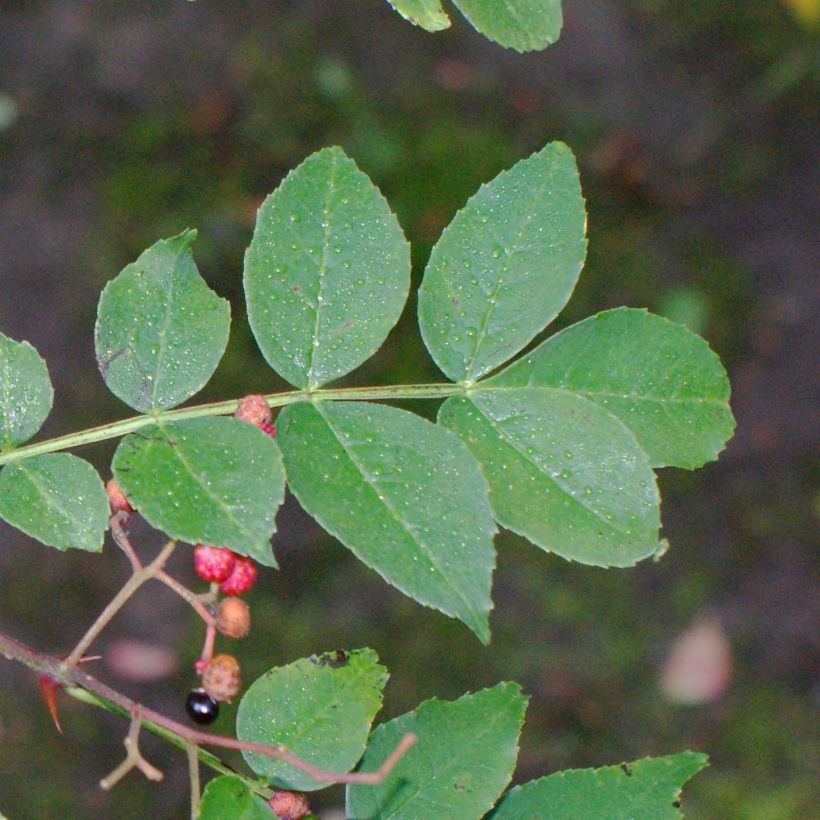

Plant habit
Flowering
Foliage
Botanical data
Zanthoxylum
simulans
Rutaceae
Sichuan pepper, Flatspine prickly-ash, Chinese prickly-ash
China
Other Zanthoxylum - Prickly Ash
Planting and care
The ash leaf clavalier is a plant that is easy to grow. You should plant it in the spring if you live in a cooler area and early autumn if you live in a drier and warmer climate. It must be planted in a sheltered location from cold and dry winds. This is important because it can damage the flowers and young shoots. The plant requires a sunny or partially shaded area, as it will not flower or fruit in dense shade. It grows best in deep, loose, fertile, and well-drained soil. It can handle limestone in the soil and acidic soil if it is not too poor. The plant grows quickly if the soil stays slightly moist during the summer. Once established after 3 years, it can survive without watering in summer in all regions. The plant is resistant to -18°C (1°F), but it is more sensitive during its early years, especially in heavy and wet soils. In such cases, it is best to lighten your garden soil with river sand, gravel or pumice. Young plants in very cold regions should be protected with horticultural fleece and mulch the base.
The Chinese pepper tree is also easy to grow and requires little maintenance—plant one every metre for a free hedge. Pruning should be done in the autumn, but it will sacrifice flowering the following spring.
Planting period
Intended location
Care
-
, onOrder confirmed
Reply from on Promesse de fleurs
Hedge shrubs
Haven't found what you were looking for?
Hardiness is the lowest winter temperature a plant can endure without suffering serious damage or even dying. However, hardiness is affected by location (a sheltered area, such as a patio), protection (winter cover) and soil type (hardiness is improved by well-drained soil).

Photo Sharing Terms & Conditions
In order to encourage gardeners to interact and share their experiences, Promesse de fleurs offers various media enabling content to be uploaded onto its Site - in particular via the ‘Photo sharing’ module.
The User agrees to refrain from:
- Posting any content that is illegal, prejudicial, insulting, racist, inciteful to hatred, revisionist, contrary to public decency, that infringes on privacy or on the privacy rights of third parties, in particular the publicity rights of persons and goods, intellectual property rights, or the right to privacy.
- Submitting content on behalf of a third party;
- Impersonate the identity of a third party and/or publish any personal information about a third party;
In general, the User undertakes to refrain from any unethical behaviour.
All Content (in particular text, comments, files, images, photos, videos, creative works, etc.), which may be subject to property or intellectual property rights, image or other private rights, shall remain the property of the User, subject to the limited rights granted by the terms of the licence granted by Promesse de fleurs as stated below. Users are at liberty to publish or not to publish such Content on the Site, notably via the ‘Photo Sharing’ facility, and accept that this Content shall be made public and freely accessible, notably on the Internet.
Users further acknowledge, undertake to have ,and guarantee that they hold all necessary rights and permissions to publish such material on the Site, in particular with regard to the legislation in force pertaining to any privacy, property, intellectual property, image, or contractual rights, or rights of any other nature. By publishing such Content on the Site, Users acknowledge accepting full liability as publishers of the Content within the meaning of the law, and grant Promesse de fleurs, free of charge, an inclusive, worldwide licence for the said Content for the entire duration of its publication, including all reproduction, representation, up/downloading, displaying, performing, transmission, and storage rights.
Users also grant permission for their name to be linked to the Content and accept that this link may not always be made available.
By engaging in posting material, Users consent to their Content becoming automatically accessible on the Internet, in particular on other sites and/or blogs and/or web pages of the Promesse de fleurs site, including in particular social pages and the Promesse de fleurs catalogue.
Users may secure the removal of entrusted content free of charge by issuing a simple request via our contact form.
The flowering period indicated on our website applies to countries and regions located in USDA zone 8 (France, the United Kingdom, Ireland, the Netherlands, etc.)
It will vary according to where you live:
- In zones 9 to 10 (Italy, Spain, Greece, etc.), flowering will occur about 2 to 4 weeks earlier.
- In zones 6 to 7 (Germany, Poland, Slovenia, and lower mountainous regions), flowering will be delayed by 2 to 3 weeks.
- In zone 5 (Central Europe, Scandinavia), blooming will be delayed by 3 to 5 weeks.
In temperate climates, pruning of spring-flowering shrubs (forsythia, spireas, etc.) should be done just after flowering.
Pruning of summer-flowering shrubs (Indian Lilac, Perovskia, etc.) can be done in winter or spring.
In cold regions as well as with frost-sensitive plants, avoid pruning too early when severe frosts may still occur.
The planting period indicated on our website applies to countries and regions located in USDA zone 8 (France, United Kingdom, Ireland, Netherlands).
It will vary according to where you live:
- In Mediterranean zones (Marseille, Madrid, Milan, etc.), autumn and winter are the best planting periods.
- In continental zones (Strasbourg, Munich, Vienna, etc.), delay planting by 2 to 3 weeks in spring and bring it forward by 2 to 4 weeks in autumn.
- In mountainous regions (the Alps, Pyrenees, Carpathians, etc.), it is best to plant in late spring (May-June) or late summer (August-September).
The harvesting period indicated on our website applies to countries and regions in USDA zone 8 (France, England, Ireland, the Netherlands).
In colder areas (Scandinavia, Poland, Austria...) fruit and vegetable harvests are likely to be delayed by 3-4 weeks.
In warmer areas (Italy, Spain, Greece, etc.), harvesting will probably take place earlier, depending on weather conditions.
The sowing periods indicated on our website apply to countries and regions within USDA Zone 8 (France, UK, Ireland, Netherlands).
In colder areas (Scandinavia, Poland, Austria...), delay any outdoor sowing by 3-4 weeks, or sow under glass.
In warmer climes (Italy, Spain, Greece, etc.), bring outdoor sowing forward by a few weeks.



































